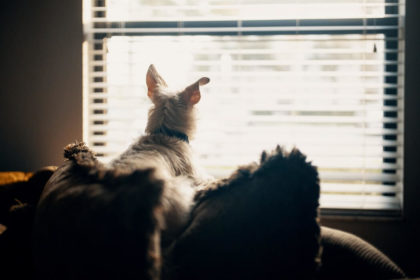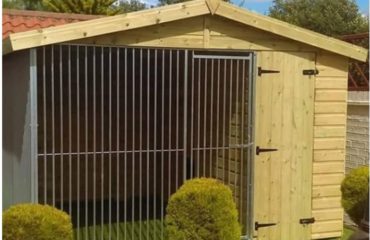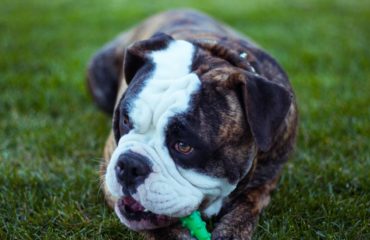Lockdown Tips: How To Avoid Dog Separation Anxiety

Lockdown, while being a scary and unusual time for many, has allowed both new and experienced dog owners to spend lots of quality time with their pets, strengthening bonds and giving owners plenty of time to practise some perhaps neglected training. It’s been wonderful for our dogs to have us around, whether you are working from home and they are happy to sit by your side until their walkies or you’re on furlough and have been able to give them your undivided attention.
Despite this, it’s important to keep in mind that the period of lockdown is gradually coming to an end and as people start to return to work our dogs are likely to feel confused and abandoned after such a long period of being around their humans 24/7. If you have welcomed a new puppy into your home or you have a dog that struggled with being separated before lockdown began, now is the time to start easing your dog into normal life and make sure you don’t go from one extreme to another.
Benchmark Kennels are here to clear up any confusion you have around trying to avoid separation anxiety and offer some clever ways to accustom your dog to spending time alone without having to necessarily leave your home entirely.
What is separation anxiety?
Before you start trying to combat and avoid separation anxiety, you need a basic understanding of what it is and what it can entail if you allow it to escalate. Dogs in the wild are pack animals meaning it is in their nature to enjoy spending time as part of a group rather than alone. This natural instinct is still there, meaning domesticated dogs can develop separation anxiety as a result of spending too much time in the company of their owners and believing that every time you leave the room you are essentially leaving forever. By introducing periods of prolonged separation and encouraging your dog to have some independence as a puppy and an adult, you will make life a lot easier when it comes to going to work or heading out to a place where dogs aren’t allowed.
How your dog reacts to being left alone will be dependent on their breed and upbringing, but it is also largely a result of how they are raised and their early experiences. While it may be tempting to spend every waking minute with a new puppy having plenty of cuddles and playtime, this will only lead to issues further down the line. For dogs that haven’t been left alone or trained to spend time without you being closeby, separation anxiety and your dog’s distress can be displayed in a number of ways such as barking, crying or whining, chewing or general destructiveness and going to the toilet indoors – all behaviours that can be hard to deal with and can even harm the relationship between you are your animal.
How to avoid separation anxiety after post-lockdown…
Develop independence
If you have a new lockdown puppy or your dog has become your little shadow during the lockdown period, now is the time to start introducing periods of alone time and encourage independence. You don’t have to go out of the house to do this either, simply leaving your dog in another room or outdoors to play and explore without you being closeby is enough. Try to extend the amounts of time you separate yourself from your dog with the end goal being your dog staying calm and relaxed whether you’re in the room or not. Make sure to leave plenty of chew toys such as Kong toys stuffed with treats or peanut butter and a comfy bed or crate for your dog to rest and feel safe while you’re gone.
Some other ways to encourage independence is to make sure your dog sleeps in their bed rather than next to wherever you are in the home and try to stick to a consistent routine, including a ‘quiet time’ for your dog to sleep without you there.
Dog kennels
Another way to avoid causing dog separation anxiety is by using indoor or outdoor dog kennels. Kennels are a perfect way to give your dog alone time outdoors without you having to keep an eye on them, leaving you an opportunity to tick off any jobs around the house or run any errands. By putting your dog in their kennel regularly, it will become a part of their daily life and your dog will start to view their kennel as their own territory to play or relax without needing attention from you.
Shared care
While all dogs will have a favourite person, usually being whoever brings them home for the first time or who feeds them, discouraging your dog from becoming too attached to one family member can help to ease separation anxiety. To do this, make sure all members of your household get involved with the daily care, feeding, walking and playtime with your dog. This way, when their favourite carer is at work or in a separate room your dog won’t display signs of anxiety or problem behaviours.

This is an especially important thing to keep in mind if you plan to use dog sitting or dog walking services after lockdown, as your dog will be difficult to manage if they are only familiar with being around one person.
Regular exercise
This may go without saying, but taking your dog for a big walk at least once a day is essential for their physical and mental wellbeing. A dog that has excess energy to burn is far more likely to freak out, chew your furniture or bark when left alone than a dog that has had plenty of exercises before you head out. As the lockdown rules have started to be lifted, try to get back into a strict routine of taking your dog for a big walk before you go to work so they can sleep it off for a big chunk of the day until you return.
Positive techniques
Finally, it’s important to remember that once a dog has developed separation anxiety, it is difficult to get rid of. You should never punish your dog for the behaviour they display while you’re out as your animal won’t understand why or what they are being punished for. Instead, don’t pay your dog any attention when you get home to avoid making a big deal out of the fact you’re together again. Over time, your dog should start to learn that being apart isn’t something to be distressed about.
Order a bespoke wooden dog kennel for post-lockdown today!
If you’re planning to go back to work soon or you just want to reintroduce a routine to help to avoid or ease your dog’s separation anxiety, an outdoor wooden or WPC eco-thermal dog kennel is an ideal solution. They are secure, insulated and are bespoke-made to suit the size and breed of your dog, whether you require multi kennels or singular dog kennels to house your animals and keep them out of harm’s way.
Order your bespoke kennel via our website today or give us a call for a quote!
4 Comments to “ Lockdown Tips: How To Avoid Dog Separation Anxiety”
You must be logged in to post a comment.





I work 40 hours a week was home for over 8 weeks in that time I lost one of my doggies my other doggy is 10 and has never been without her sister and is finding it really hard being left on her own for long periods just seems so depressed I was thinking of getting a kitten so she has some company do you think that would be a good idea
Hello recently I adopted a 7 year old terrier cross , the first day we got her she would bark a lot when we leave for work , though she have the company of my first dog . By the time she learned that is okay and we will come back and there is nothing to worry about , but we still after 3 month of hard work she has anxiety during walks and when we take her to places she is not familiar with parks, coffee shops etc .. do you have any suggestions how to help her cause Its so sad that she can’t enjoy our time we spent together outside of the house .
best seo companies us
mysbvdpsj jjjwq btkefns zfee mmheopgwhflomuc
… [Trackback]
[…] There you will find 45112 more Info to that Topic: benchmarkkennels.co.uk/lockdown-tips-avoiding-dog-separation-anxiety […]